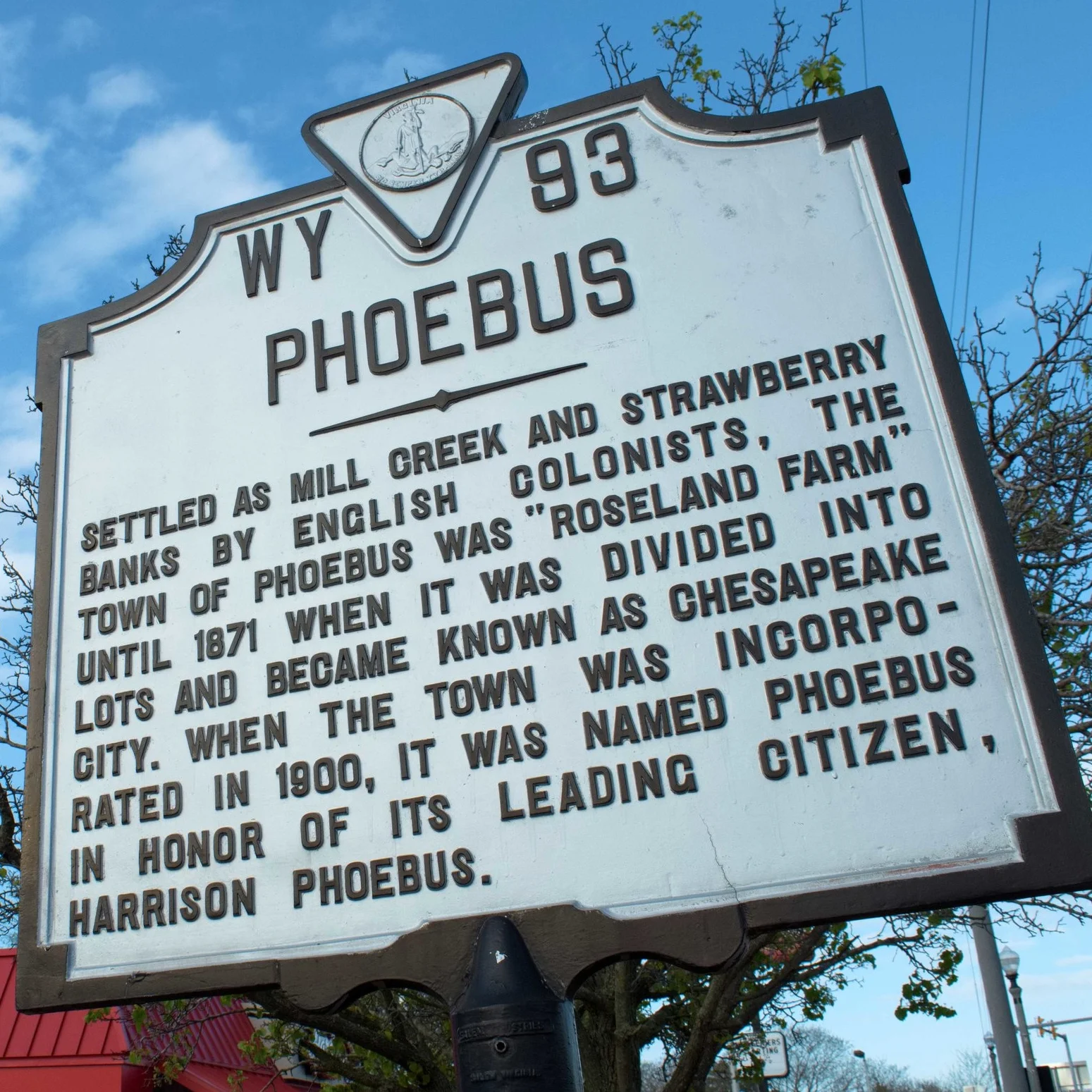Our History
As Old As America Itself
Then
Rich and diverse historical influences have played a crucial part in shaping Phoebus during its 400-year history – a unique, colorful crossroads community that thrives today.
Just three years after settling in Jamestown, English settlers from Fort Algernon on neighboring Old Point Comfort seized the Native American village of Kecoughtan on July 9, 1610, founding a farming settlement known as Mill Creek. Through this settlement, Hampton remains the oldest continuous English-speaking settlement in the United States.
Following prominent involvement in the Civil War as the Union’s Camp Hamilton, including acting as one of America’s first contraband slabtown communities, Unionist Joseph Segar sold his sprawling farm “Roseland” in parcels that created the footprint for the town. The streets were named after prominent citizens – Mallory, Curry, Hope, Mellen - and the village quickly grew to town status, changing its name from Mill Creek to Chesapeake City by 1871.
The railroad station and the first post office in the community were both named Phoebus in honor of Harrison Phoebus, the prominent owner of the Hygeia, a luxurious 1,000-room resort hotel – a forerunner of today’s venerable Chamberlin Hotel located on Fort Monroe.
The first recorded saloons appeared as early as 1869, with the town boasting 52 licensed saloons by its incorporation in 1900. In that year, its citizens chose the name of Phoebus to serve as a reminder of the former postmaster and hotelier who helped convince the Chesapeake & Ohio Railway to extend its line to the Phoebus community, making it a popular destination convenient to Old Point Comfort.
During World War I and again during World War II, thousands of troops passed through Phoebus to the port of embarkation at Fort Monroe. Phoebus endured the prohibition era and emerged as a popular liberty spot during World War II, earning it the moniker Little Chicago. In 1952, the town was consolidated into the City of Hampton but has never lost its strong sense of identity and pride.
Now
Today, a vital Phoebus stands at the crossroads of the proud institutions that helped forge the community: Fort Monroe, Hampton University, and the Veterans Administration Medical Center. Its corporate seal displays a sun rising over ocean waves. Many believe the sun symbol was chosen because Phoebus is the Greek word for Apollo, the sun god, and Phoebus is first to greet the sun when it rises from the Atlantic each morning.
A National Historic District.
The Phoebus National Historic District encompasses an 86-acre section of the community and includes the historic business area on Mellen and Mallory Streets and a significant number of homes. The district was added to the Commonwealth’s Landmarks Register by the Virginia Board of Historic Resources on September 6, 2006.
On December 1, 2006 the National Park Service added the Phoebus Historic District to its National Register of Historic Places. Of the 426 buildings included in the district, 60 percent are now eligible for a combination of federal and state tax credits of up to 45 percent for qualified preservation or rehabilitation.
In Virginia, among the more than 2,400 properties already listed on the National Register of Historic Places include Fort Monroe, Fort Wool, the William H. Trusty House, and the Reuben Clark House in Phoebus.


